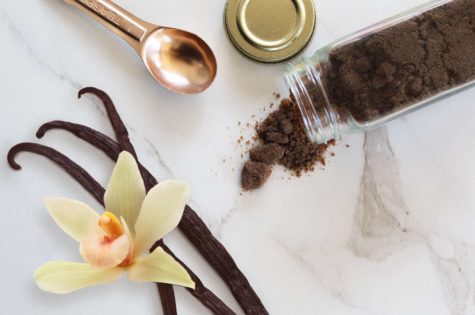Aromatherapy: a holistic destresser

Courtesy of 100percentpure.com
Essential oils are made by isolating liquids from plants using solvents, and come in a variety of scents from a variety of plants.
The use of aromatic plants for therapeutic purposes has been around for eons, with aromatic herbs and plants being found by the grave of Bishop Peder Winstrup, who passed in December of 1679, peacefully laying on a bed of lavender, dill, and lemon balm. Fragrant herbs aren’t reserved for only the dead. For centuries, some of the greatest civilizations have used herbs and essential oils to uplift the spirit and heal the body, as well as in religious practices, and perfumery. Today, aromatherapy, the practice of using essential oils and scents for therapeutic benefit is a prominent form of self-care for many people. High school has the potential to be an incredibly stressful time for some teenagers, so it is beneficial to consider all forms of destressing and self-care, including aromatherapy.
In a survey that was answered by 52 AGHS students, 69.2% reported that certain scents instantly boosted their mood when asked how favorable scents impacted them. However, the majority of students who responded to the aromatherapy survey had never tried using essential oils or certain fragrances for therapeutic purposes.
Most people have certain smells that are nostalgic and soothing, that may help them to feel comfortable and relaxed, or that remind them of a favorite childhood memory, or being out in nature. When AGHS students were asked what their overall favorite scent was, a variety of answers were collected.
“Depending on the mood, if I’m feeling motivated I use lemongrass, if I’m feeling stressed then I use lavender or cool mint, I have a diffuser and find myself excited when I pick what scent I’m going to use,” said an AGHS student.
Not only does experiencing pleasant scents have therapeutic benefits, but the ability to pick out personalized scents and decide how they are used arguably provides one with a sense of control, comfort, and satisfaction. In an article by student writers at John Hopkins, the writer listed multiple therapeutic essential oil uses, such as aromatic accessories.

“Necklaces, bracelets, and keychains made with absorbent materials you apply essential oils to and sniff throughout the day,” writers at hopkinsmedicine.org said.
With the plethora of uses and accessories available with essential oils and aromatherapy, aromatherapy can be accessible to everyone. Below are three popular aromatherapy scents and their qualities, properties, and benefits that can be incorporated into daily life. (Via The American Botanical Counsel)
Lavender: Lavender is one of the most versatile essential oils and a staple in aromatherapy. Historically it has been used by the Romans, Persians, and Greeks for medicinal purposes, such as disinfecting hospitals or sick bays, and more general healing abilities. In spiritual occult and Wiccan practices, lavender is representative of aligning the chakras and rejuvenating the spirit. Today, lavender is commonly used for relaxation, promoting inner peace, and decreasing stress.
Vanilla: Vanilla essential oil has been used as a natural home remedy as far back as the 17th century for its nutritional value, with antioxidant properties that have physiological benefits. A warm and inviting scent, vanilla invokes feelings of happiness, comfort, and relaxation.
Eucalyptus: Eucalyptus essential oil has a woody, crisp, and sweet aroma, as well as a plethora of health benefits. Not only does it smell amazing, but eucalyptus is anti-inflammatory, helps with congestion, and is great at keeping bugs away.

Mia Hinds is a senior at AG High School, and is in her second and final year with the Eagle Times. She has a dog named Miko, who is a pitbull and husky...








